Introduction
The convergence of Artificial Intelligence (AI) and the Internet of Things (IoT) is reshaping the operational landscape across various industries, giving rise to a powerful framework known as AIoT. By merging the extensive data-gathering capabilities of IoT devices with the analytical prowess of AI algorithms, organizations are unlocking new levels of efficiency and innovation. This integration not only empowers businesses to make informed decisions but also streamlines automation processes, ultimately enhancing performance metrics and reducing costs.
From revolutionizing supply chains, as seen in Renault’s data-driven approach, to transforming healthcare with remote patient monitoring, the applications of AIoT are vast and impactful. As industries continue to embrace this technological synergy, understanding the core components, benefits, and challenges of AIoT integration becomes essential for those aiming to maintain a competitive edge in a rapidly evolving market.
What is AIoT: The Convergence of AI and IoT
The convergence of Artificial Intelligence (AI) and the Internet of Things (IoT) has given rise to a transformative framework known as AIoT, which significantly enhances operational capabilities across various industries. This integration utilizes the extensive information-gathering abilities of IoT devices, which monitor and collect insights from their environments, and couples it with the analytical power of AI algorithms. By examining this information, organizations can uncover actionable insights that drive smarter decision-making and streamline automation processes.
For instance, Renault’s supply chain exemplifies the effectiveness of AIoT. ‘Since the establishment of a repository in 2017, which consolidated 100% of the supply chain’s information by 2021, Renault has harnessed this structured information to create a control tower in collaboration with partners like Shippeo.’. This control tower allows for precise management of factory supply logistics, ensuring that the status of incoming shipments is always monitored and optimized. As Ludovic Doudard, General Manager of Process Engineering Supply Chain at Renault, stated, “While we have digitized and structured our processes well, our information relies on information systems, it is thus naturally structured.”
Moreover, the oil and gas sector is undergoing a significant transformation as it increasingly adopts artificial intelligence and Internet of Things technologies for leak detection. The industry’s push for continuous measurement systems to monitor fugitive emissions has highlighted the necessity of integrating AI with IoT capabilities. Methane, for example, is recognized as having a global warming potential 84% more potent than CO2, emphasizing the urgency for real-time monitoring solutions.
With intelligent interconnected devices, organizations are not merely gathering information; they are deriving value from it. This strategic approach enables them to enhance efficiency, reduce costs, and improve key performance indicators (KPIs) relevant to their operations. Research has shown that successful implementations of AIoT can lead to improved overall equipment effectiveness (OEE) and significant cost savings, illustrating the importance of integrating modern technological solutions into existing business processes.
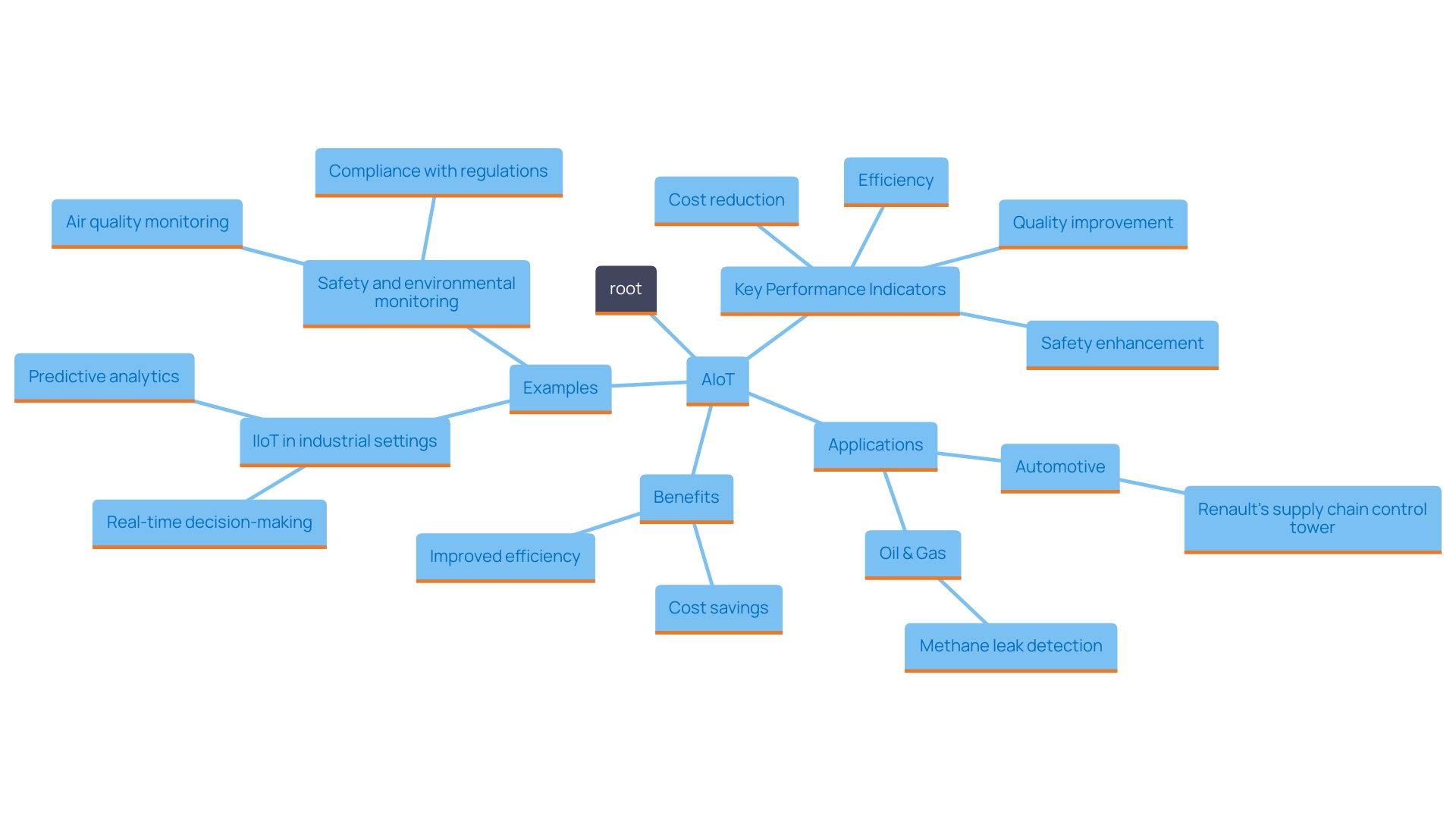
Benefits of AIoT Synergy
The integration of Artificial Intelligence (AI) and the Internet of Things (IoT) revolutionizes business operations by significantly enhancing efficiency and productivity. With the capability to automate processes and enable real-time information analysis, organizations can respond swiftly to changing market dynamics. ‘For instance, a recent study analyzed 22 implementations of IoT technologies and documented various outcomes, including improved Overall Equipment Effectiveness (OEE) and reduced expenses. This integration not only streamlines workflows but also drives innovation, enabling companies to maintain a competitive edge in a fast-paced environment.
In practical terms, the IoT serves as a network of interconnected devices equipped with sensors that gather and exchange data, ranging from simple household items to complex industrial machinery. This connectivity allows for the monitoring of critical parameters such as machine performance and energy consumption, enabling organizations to identify patterns and anomalies in real time. Furthermore, as emphasized by industry specialists, concentrating on automating low-complexity, repetitive tasks frequently results in the most substantial quick wins in efficiency.
The challenges encountered during these implementations often revolve around aligning technology with existing processes. Companies have found success by narrowing their focus to areas that are manual and costly, effectively mapping out the necessary stakeholders and systems involved. This strategic approach not only enhances efficiency in operations but also fosters a culture of continuous improvement and innovation, paving the way for organizations to thrive amid evolving industry standards and consumer expectations. As the industrial connectivity market is expected to expand considerably—from $89 billion in 2023 to $104 billion by 2028—companies adopting this technological landscape stand to gain substantial advantages in their frameworks.
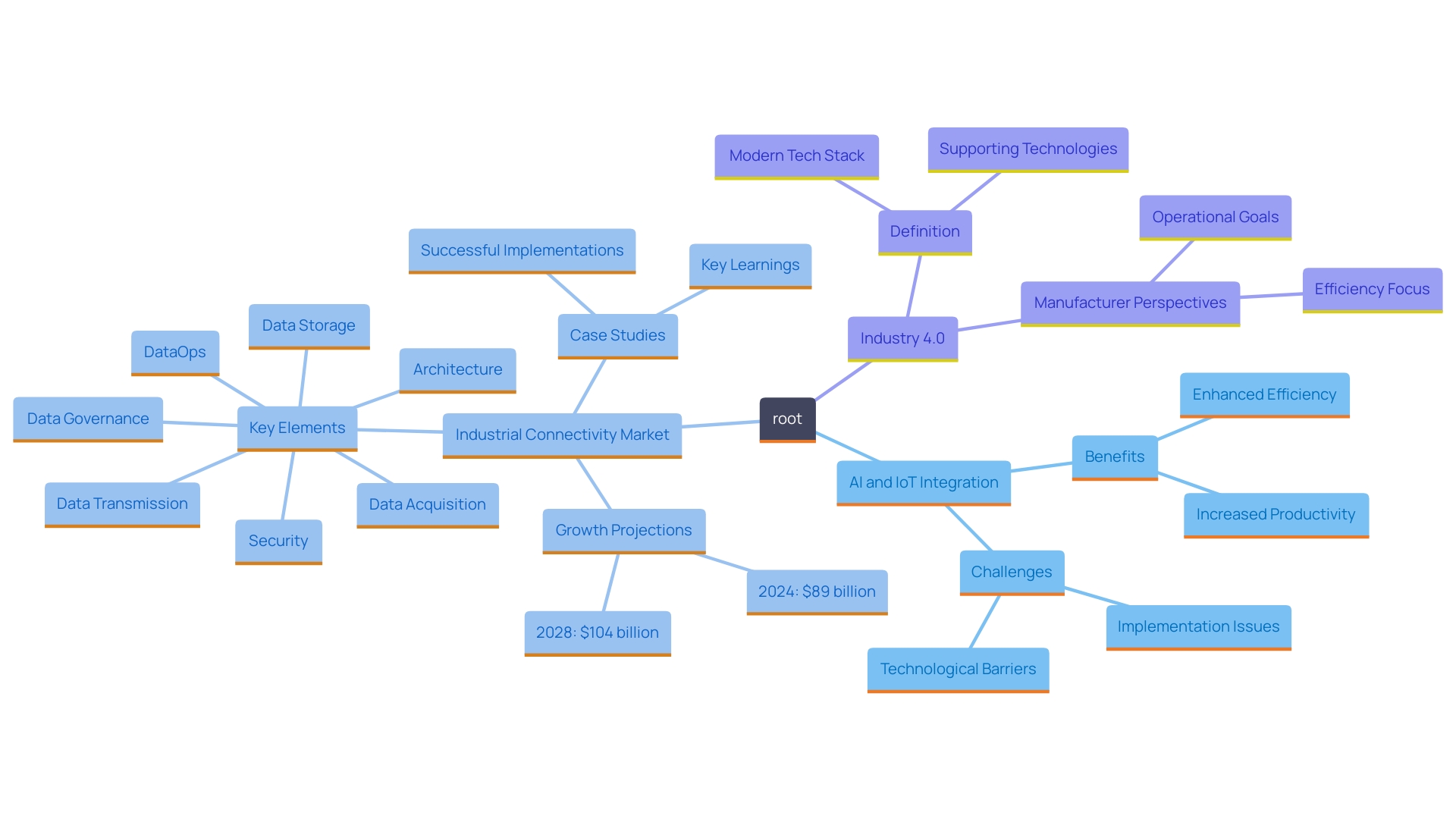
Applications of AIoT in Various Industries
The combination of Artificial Intelligence and the Internet of Things is transforming sectors like manufacturing, healthcare, and transportation, offering substantial improvements in efficiency and service delivery.
In the manufacturing sector, intelligent solutions are transforming production processes through advanced information analysis and predictive upkeep. By embedding IoT devices across the production line, manufacturers can gather real-time data on machine performance and operational metrics. This allows them to achieve higher Overall Equipment Effectiveness (OEE), reduce downtime, and cut costs. For instance, a recent study highlighted that companies utilizing artificial intelligence and the Internet of Things achieved a reduction in maintenance costs by up to 30%, demonstrating a clear return on investment. Moreover, organizations that adopt a structured approach—starting with pilot projects to prove technology value—set themselves up for scalable success in the long run.
In healthcare, artificial intelligence and Internet of Things applications are enabling remote patient monitoring, which is crucial for delivering personalized care. With connected devices, healthcare providers can track vital signs in real-time, leading to timely interventions and improved patient outcomes. A notable example is the use of artificial intelligence in managing chronic diseases, where patients’ data is continuously monitored, allowing for data-driven treatment adjustments. Such proactive healthcare solutions not only enhance patient care but also help healthcare systems reduce costs associated with hospital readmissions and emergency visits.
Transportation is another area where intelligent connected devices are making strides, particularly in fleet management and traffic monitoring. By utilizing AI algorithms alongside IoT sensors, companies can optimize routes, monitor vehicle health, and manage fuel efficiency. This not only results in safer logistics but also minimizes environmental impact. Fleet operators utilizing intelligent connected technologies have reported a 20% decrease in fuel usage, highlighting the potential for cost savings and enhancements in sustainability.
Overall, the successful application of artificial intelligence and the Internet of Things across these sectors illustrates the importance of having a clear vision and setting specific goals, whether that be enhancing efficiency, improving safety, or reducing costs. As the industry progresses, adopting artificial intelligence in the Internet of Things will be essential for remaining competitive and addressing the needs of a swiftly changing market.
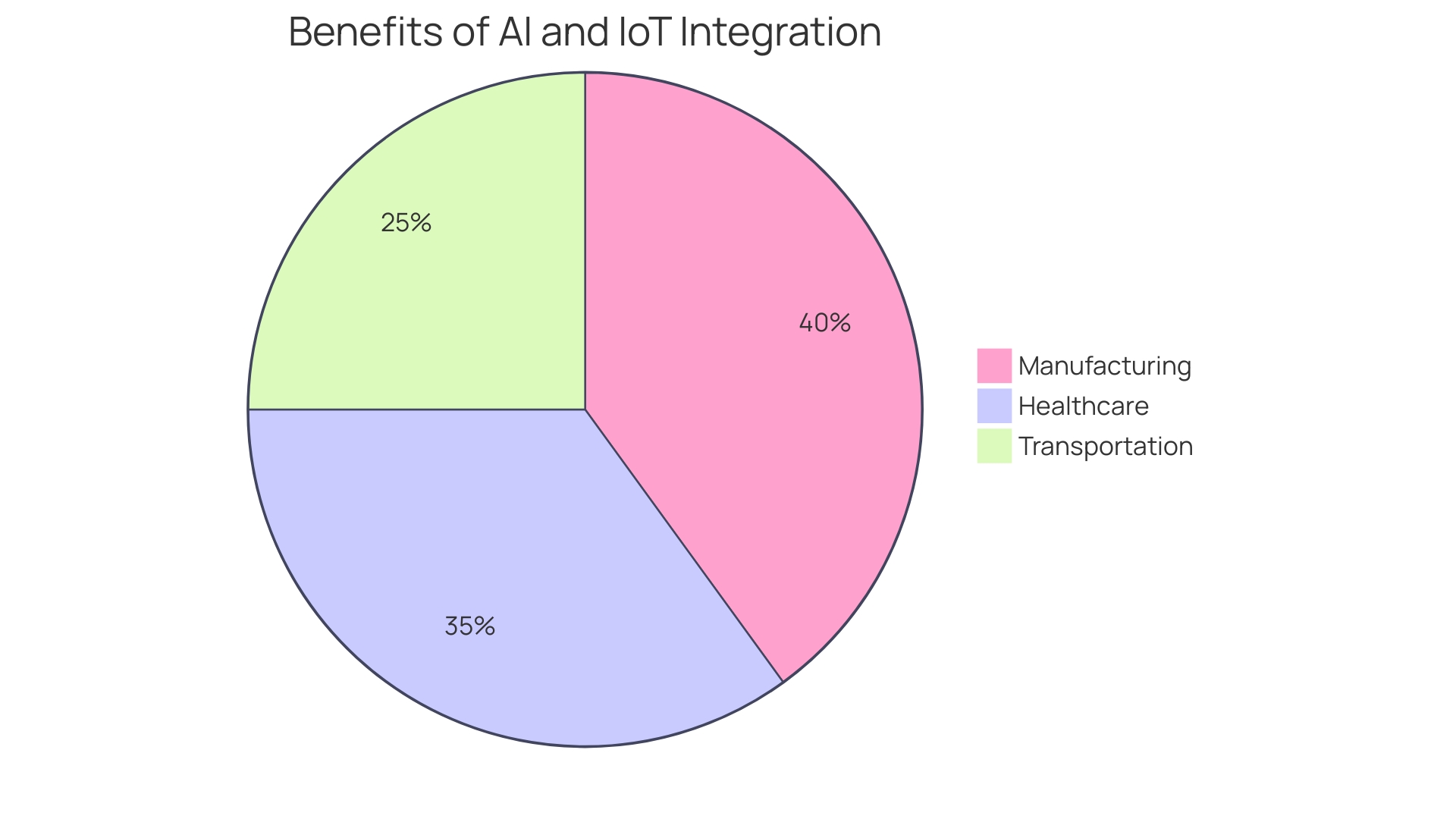
Key Components of AIoT Integration
Successful integration of Artificial Intelligence and the Internet of Things (AIoT) hinges on several critical components that form the backbone of this transformative technology. At the core is robust connectivity, which facilitates seamless communication among diverse devices, ensuring that information flows effortlessly across the network. This connectivity not only improves effectiveness but also establishes the foundation for real-time information sharing and collaboration.
Data management systems play a pivotal role in this ecosystem, enabling the effective storage, processing, and analysis of vast amounts of information generated by connected devices. ‘The significance of time series information management cannot be overstated; it allows organizations to harness trends over time, leading to more informed decision-making and strategic insights.’. Companies that have adopted such systems are increasingly reporting improved operational efficiency and reduced costs.
AI algorithms are equally essential, as they are tasked with interpreting the data collected from various sources. By utilizing advanced machine learning techniques, these algorithms can identify patterns, predict outcomes, and drive automation in a myriad of applications, ranging from predictive maintenance to supply chain optimization. For example, producers utilizing these advancements have effectively attained greater Overall Equipment Effectiveness (OEE) and enhanced key performance indicators (KPIs) related to their production setups.
As Industry 4.0 continues to evolve, organizations are recognizing the importance of integrating these elements to stay competitive. The ongoing digital transformation initiatives highlight the critical nature of these components, as they work synergistically to push the boundaries of what is possible in modern manufacturing and operations.
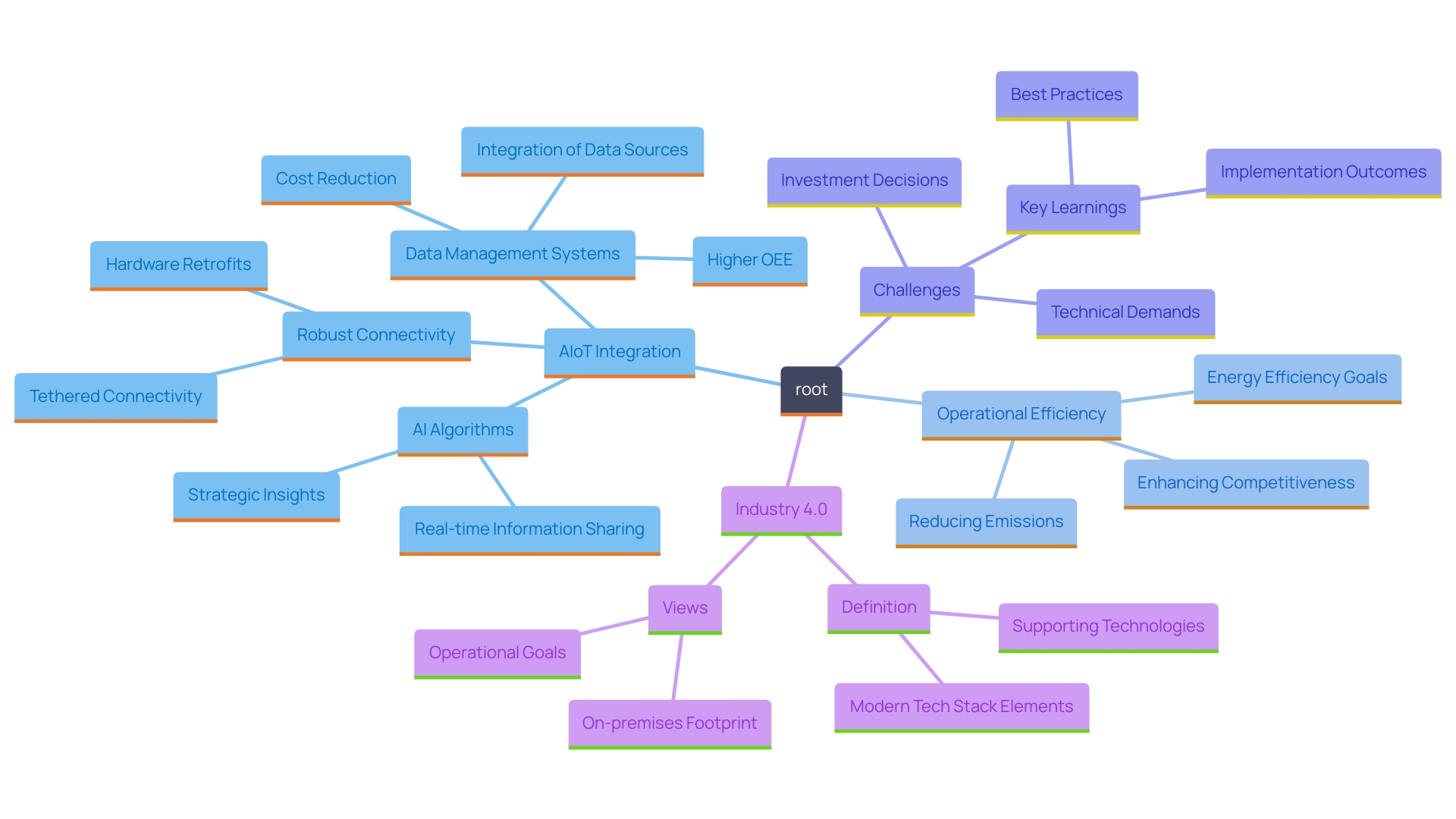
Challenges and Future Prospects in AIoT Integration
Integrating Artificial Intelligence of Things (AIoT) into business processes presents significant opportunities, yet it is not without its hurdles. Key challenges include ensuring information privacy, achieving seamless interoperability among diverse systems, and addressing the growing need for skilled personnel adept in both IoT and AI technologies. As urban environments evolve into smart cities and industries embrace the Industrial Internet of Things (IIoT), the need for strong security measures, real-time information capabilities, and intelligent systems becomes increasingly vital.
To maximize the benefits of AIoT, organizations must navigate these challenges with strategic foresight. For instance, maintaining information integrity is paramount; accurate and properly calibrated sensors are essential at the inception level where information is generated. At the aggregation and control levels, different security needs arise, necessitating a multifaceted approach to data security throughout the smart city infrastructure.
Looking ahead, the prospects for AIoT are bright. Advances in machine learning and edge computing are paving the way for more sophisticated applications that can enhance operational efficiency. As Dimitris Paraskevopoulos, a Senior Analyst, advises, organizations should approach AI as a tool that requires thoughtful implementation—considering the why, who, and how before deployment. ‘This strategic mindset, combined with the advancement of interconnected devices, positions companies to utilize state-of-the-art solutions effectively, ultimately driving innovation and enhancing key performance indicators.’.
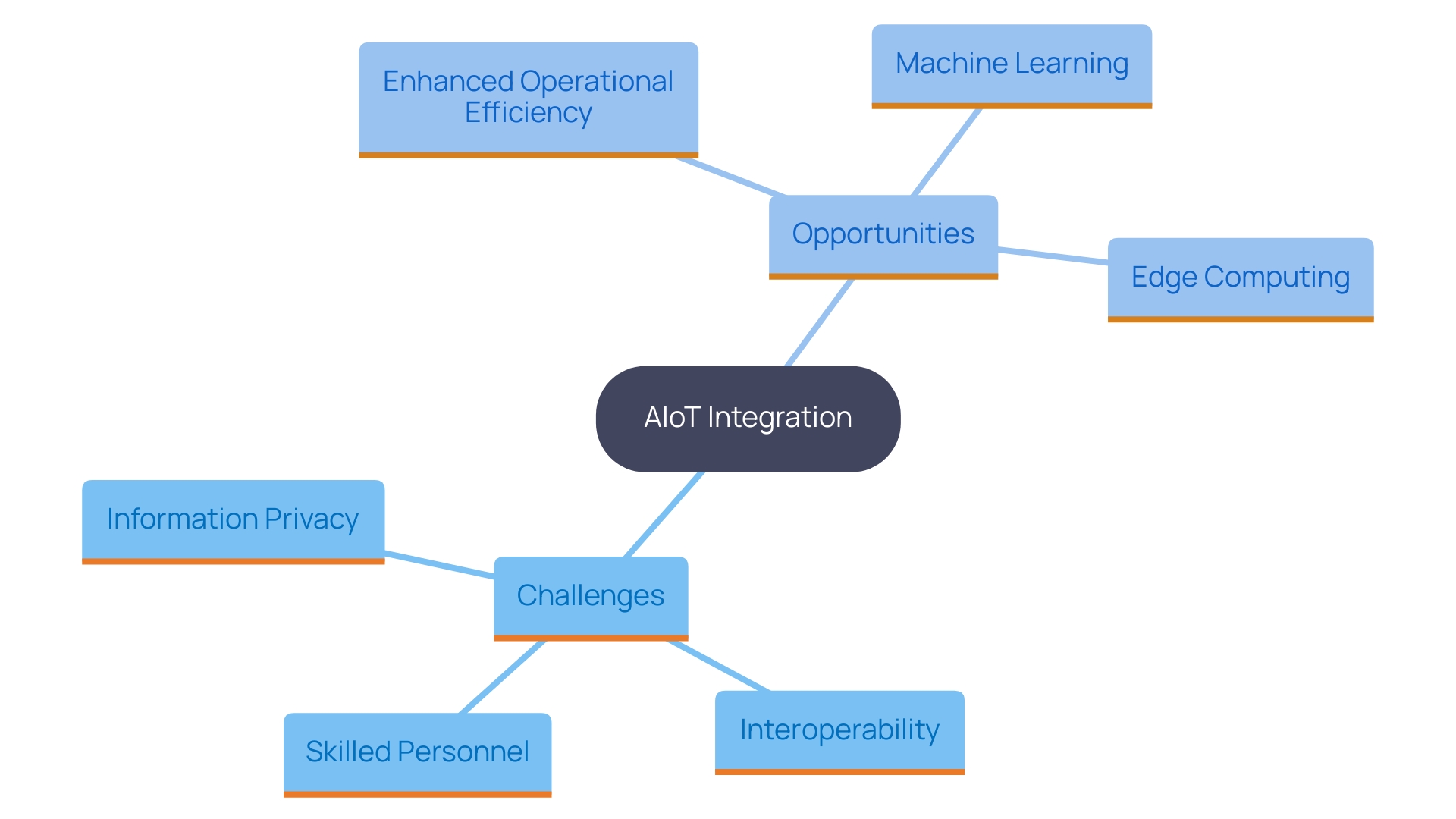
Real-World Examples of AIoT in Action
Organizations across various sectors are reaping the benefits of Artificial Intelligence of Things solutions, demonstrating its transformative capabilities. Smart factories, for instance, utilize advanced technologies to oversee machinery and tools in real-time, facilitating predictive maintenance that can detect potential failures before they develop into expensive downtime. According to recent findings, these advancements have led to higher Overall Equipment Effectiveness (OEE) and significant cost reductions, which are crucial metrics for operational success in manufacturing.
In the realm of smart cities, artificial intelligence and the Internet of Things are transforming traffic management systems. By utilizing real-time data to adapt traffic signals and flow, these systems have proven effective in minimizing congestion and enhancing public safety. ‘The incorporation of artificial intelligence and the Internet of Things in urban settings is not merely hypothetical; concrete results include a decrease in traffic holdups and enhanced emergency response durations.’.
However, the journey to successful artificial intelligence and Internet of Things implementation is not without its challenges. Companies have encountered issues such as data integration complexities and resistance to change from employees. For instance, in one case study, a manufacturing firm faced significant hurdles in aligning their legacy systems with new artificial intelligence of things solutions. By nurturing an organizational culture that emphasized teamwork and ongoing education, they managed to surmount these obstacles, resulting in a more seamless transition and more efficient utilization of resources.
The insights gathered from these implementations highlight key learnings that can be beneficial for other organizations embarking on similar digital transformation initiatives. As experts indicate, grasping the particular architectural requirements and functional objectives pertinent to artificial intelligence and the Internet of Things can significantly improve the deployment strategies. For instance, manufacturers are encouraged to focus on leveraging modern technology stacks that facilitate data integration and drive efficiency.
Overall, these case studies underscore how AIoT can be a powerful catalyst for operational improvement, paving the way for organizations to adapt and thrive in an increasingly connected world.
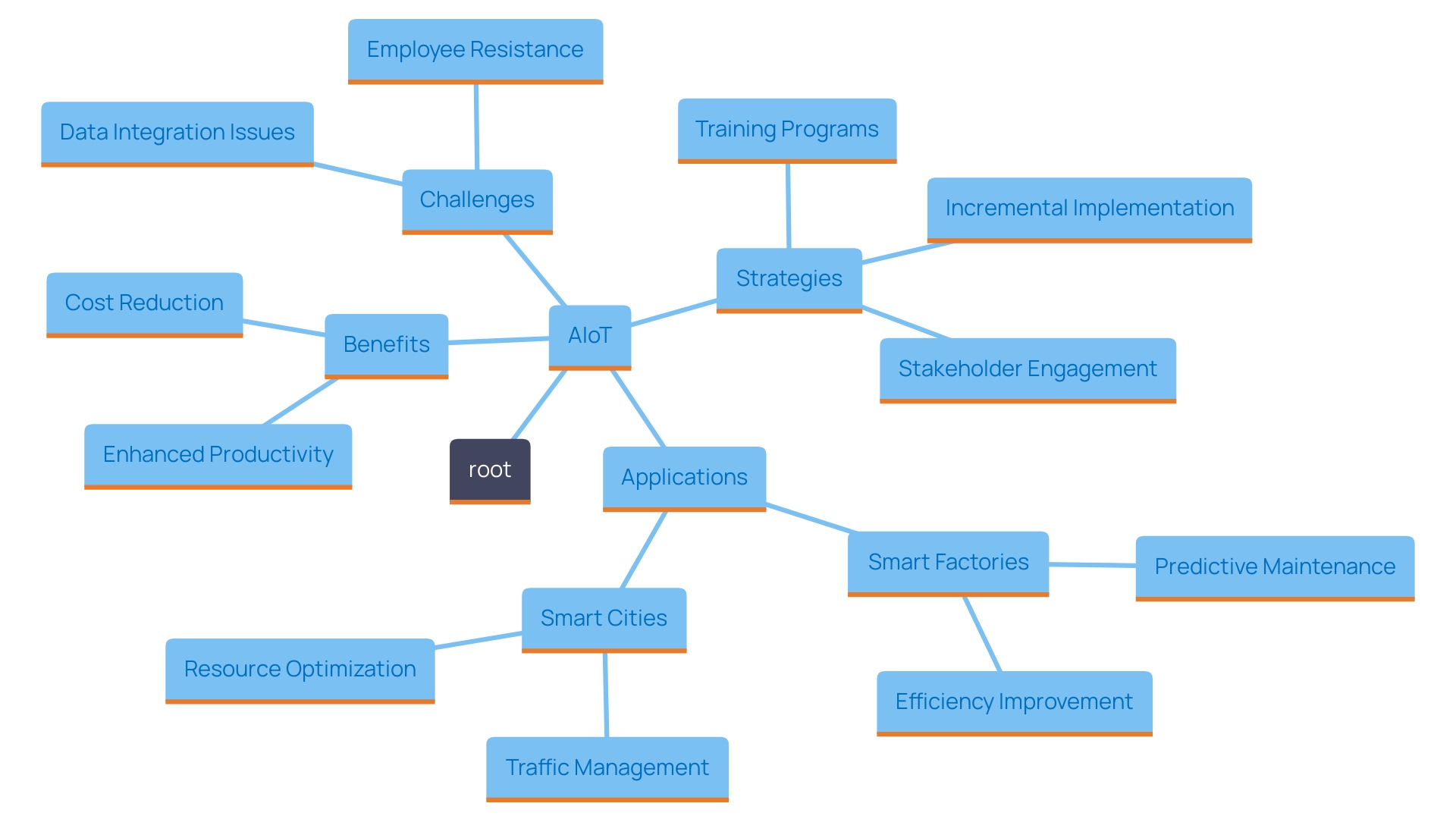
Conclusion
The integration of Artificial Intelligence (AI) and the Internet of Things (IoT) into the AIoT framework is transforming business operations across various sectors. By merging IoT’s data-gathering capabilities with AI’s analytical power, organizations enhance efficiency and unlock new innovation opportunities. Examples like Renault’s optimized supply chain and advancements in remote patient monitoring highlight significant benefits, including improved performance metrics and cost reductions.
AIoT enables automation and rapid responses to market changes, with studies indicating notable improvements in Overall Equipment Effectiveness (OEE) and operational savings. However, successful implementation requires strategic alignment of technology with existing processes to foster continuous improvement.
Despite its potential, AIoT integration faces challenges such as data privacy, interoperability, and the need for skilled personnel. Organizations must prioritize data integrity and security to fully realize AIoT’s benefits. Future advancements in machine learning and edge computing will further enhance AIoT capabilities, empowering businesses to achieve operational excellence.
In summary, the convergence of AI and IoT through AIoT presents a powerful opportunity for organizations to enhance efficiency, drive innovation, and maintain competitiveness. By addressing challenges and embracing AIoT’s potential, companies can position themselves for future success.

